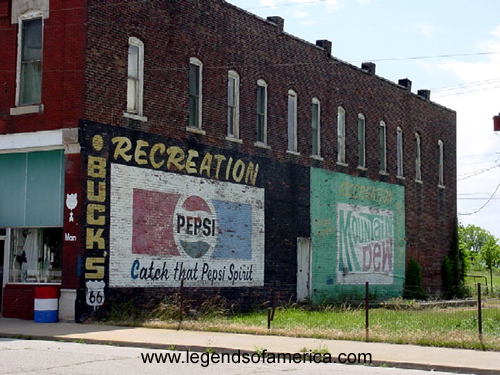And you know it's not right
When you kiss me tonight
You pretend his lips are mine
Crabby Appleton was a short-lived Los Angeles band that released two well-reviewed LPs and opened for some high-profile groups – including the Guess Who, Three Dog Night, and the Doors – before disbanding.
I recently rediscovered the group's biggest single, "Go Back," on a 5-CD compilation set called Forever Changing: The Golden Age of Elektra 1963-1973 . (Thank you, Montgomery County Public Library!)
. (Thank you, Montgomery County Public Library!)
Although its stable of recording artists included the Doors, Elektra Records was not really a rock or pop label – it leaned more towards folk, with artists like the Byrds, Judy Collins, Tom Rush, Phil Ochs, and Richard Farina. Elektra also signed the amazing, one-of-a-kind Arthur Lee and Love, who supposedly persuaded the label's co-founder, Jac Holtzman, to give the Doors a chance.
But Elektra was not known for perfect little three-minute AM radio singles like "Go Back."
 |
But Elektra was not known for perfect little three-minute AM radio singles like "Go Back."
* * * * *
Crabby Appleton is an odd name for a band. Anyone out there know where it comes from?
My more mature readers may remember that Crabby Appleton – his slogan was "Rotten to the core!" – was the arch-villain on the "Tom Terrific" cartoon that was featured on the legendary "Captain Kangaroo" TV show, which aired five mornings a week on the CBS television network in the 1950's and 1960's.
Tom Terrific was a boy superhero who wore a funnel-shaped "thinking cap," which enabled him to turn himself into a tornado, a train, or whatever was necessary.
Click here to see the "Tom Terrific" intro.
 |
| Crabby Appleton's publicity photo |
Tom Terrific was a boy superhero who wore a funnel-shaped "thinking cap," which enabled him to turn himself into a tornado, a train, or whatever was necessary.
Click here to see the "Tom Terrific" intro.
* * * * *
We had two television stations in my home town (Joplin, Missouri) back in the day. One was a CBS affiliate – CBS was the dominant network back then, with the Ed Sullivan, Jackie Gleason and Red Skelton variety shows, plus "Gunsmoke" and "Beverly Hillbillies" and many others – while the other local station carried a mix of NBC and ABC programming.
Much to my chagrin, the second station chose to stick with the fuddy-duddy ABC western "Wagon Train " in 1964, when NBC introduced the coolest TV show ever, "The Man from U.N.C.L.E." I was beside myself.
 |
| The stars of "The Man from U.N.C.L.E." |
* * * * *
Both my parents worked when I was a kid, so I spent most of my summer days with my grandmother, who lived only a couple of blocks away. She was very young and very energetic for a grandmother, and really functioned more like a second mother for me. (When I was born, she was less than a year older than I was when my youngest child was born.) My mother was only child, and I was an only child until I was almost 7, so I had my grandmother all to myself.
I have vivid memories of my grandmother's cooking. She did all the standards – hamburgers, fried chicken, mashed potatoes and gravy, etc.
A favorite Saturday lunch to accompany the major-league baseball "Game of the Week" (broadcast by legendary former players Dizzy Dean and Pee Wee Reese) was macaroni and cheese topped with pan-fried sliced bologna.
When "The Wonderful World of Disney" aired on Sunday evenings, I would watch it while eating my standard Sunday night dinner – scrambled eggs, toast with grape jelly, and a chocolate milk shake.
But the most remarkable dish she prepared was known as "syrup 'n' bread," a favorite breakfast that I speculate was something that was created out of necessity during the Depression. To make it, you cut up two slices of white sandwich bread into nine bite-sized squares each, placed small pats of margarine on each square, and poured white Karo syrup over it. (Sort of a poor man's French toast, I guess.)
There weren't a lot of kids living on my grandmother's block and certainly no summer camps or other planned activities for me, so I spent most of the day in front of the television. (As I got older, I spent more time reading. I'd often go to the public library and check out six books – which was the maximum number allowed -- then return them the next day and get six more.)
After starting my days off with "Captain Kangaroo," I watched several game shows – "Jeopardy" (hosted by the smooth and very insincere Art Fleming) was my favorite. (Yes, I kept score.)
Click here to watch a brief segment from a vintage "Jeopardy" episode.
At noon, I would have lunch and watch a curious local program called "Melody Matinee," which was obviously aimed at rural housewives and senior citizens.
It featured a country/gospel band (including a guitar player named Earl who was missing the third and fourth fingers on his strumming hand) and a genial host who acknowledged viewers' birthdays and anniversaries and passed along song requests. (The TV station's website claims that "Melody Matinee" was the longest running local music program in the U.S.)
Click here to learn more about "Melody Matinee."
After that, my grandmother watched "As the World Turns" and a couple of other soap operas. Later in the afternoon, there were old Roy Rogers and Gene Autry reruns, "Three Stooges" reruns, and reruns of "Wrestling with Russ Davis" from the Chicago Amphitheatre – click here to watch a match featuring Gorgeous George, the greatest of all the old-time wrestlers.
I have vivid memories of my grandmother's cooking. She did all the standards – hamburgers, fried chicken, mashed potatoes and gravy, etc.
A favorite Saturday lunch to accompany the major-league baseball "Game of the Week" (broadcast by legendary former players Dizzy Dean and Pee Wee Reese) was macaroni and cheese topped with pan-fried sliced bologna.
 |
| Dizzy Dean and Pee Wee Reese |
But the most remarkable dish she prepared was known as "syrup 'n' bread," a favorite breakfast that I speculate was something that was created out of necessity during the Depression. To make it, you cut up two slices of white sandwich bread into nine bite-sized squares each, placed small pats of margarine on each square, and poured white Karo syrup over it. (Sort of a poor man's French toast, I guess.)
* * * * *
There weren't a lot of kids living on my grandmother's block and certainly no summer camps or other planned activities for me, so I spent most of the day in front of the television. (As I got older, I spent more time reading. I'd often go to the public library and check out six books – which was the maximum number allowed -- then return them the next day and get six more.)
After starting my days off with "Captain Kangaroo," I watched several game shows – "Jeopardy" (hosted by the smooth and very insincere Art Fleming) was my favorite. (Yes, I kept score.)
Click here to watch a brief segment from a vintage "Jeopardy" episode.
* * * * *
At noon, I would have lunch and watch a curious local program called "Melody Matinee," which was obviously aimed at rural housewives and senior citizens.
It featured a country/gospel band (including a guitar player named Earl who was missing the third and fourth fingers on his strumming hand) and a genial host who acknowledged viewers' birthdays and anniversaries and passed along song requests. (The TV station's website claims that "Melody Matinee" was the longest running local music program in the U.S.)
 |
| "Melody Matinee" stars Virgil and Earl |
After that, my grandmother watched "As the World Turns" and a couple of other soap operas. Later in the afternoon, there were old Roy Rogers and Gene Autry reruns, "Three Stooges" reruns, and reruns of "Wrestling with Russ Davis" from the Chicago Amphitheatre – click here to watch a match featuring Gorgeous George, the greatest of all the old-time wrestlers.
* * * * *
Back to Crabby Appleton, the villain in the "Tom Terrific" cartoons and the namesake of the band that recorded today's featured song.
I actually thought Crabby Appleton was the villain on "Underdog" – one of the very best cartoon series of my childhood – but Underdog's arch-enemy was actually Simon Bar Sinister.
Here's Crabby Appleton:
 |
And here's Simon Bar Sinister:
 |
I think my confusion is understandable. One black-and-white mad-scientist cartoon arch-villain looks pretty much like the next one.
By the way, Simon Bar Sinister's name is an example of macaronic language, which mean text that mixes words from more than one language – here, the name is sort of a bilingual pun on a heraldic mark known as a "bend sinister" in English, which indicates there's an illegitimate birth in the family line. "Barre" – pronounced "bar" – is the French equivalent of "bend." Hence, Simon Bar Sinister is another way of saying "Simon the Bastard," which he was.
* * * * *
The "Underdog" theme song was a classic:
When criminals in this world appear
And break the laws that they should fear
And frighten all who see or hear
The cry goes out both far and near for Underdog!
Underdog! Underdog! Underdog!
Speed if lightning, roar of thunder,
Fighting all who rob and plunder
Underdog! Underdog!
Click here to listen to that theme song.
Underdog was modeled loosely on Superman. He was a mild-mannered shoeshine boy who transformed himself into a super-powered hero by taking an energy pill and going into a phone booth to change into a Superman-like costume. Underdog, who always spoke in rhyming couplets – e.g., 'There's no need to fear/Underdog is here!" -- was voiced by Wally Cox, whose television persona was that of a 97-pound weakling, but who was actually strong and athletic. (He and Marlon Brando were close friends – rumor has it that they were lovers – and their ashes were scattered together in Death Valley after Brando's death.)
 |
| Wally Cox and Marlon Brando |
* * * * *
Click here to hear a cover of the "Underdog" theme song recorded by the Butthole Surfers, of all people.
The Butthole Surfers are a very strange and disturbing band founded by Gibby Haynes and Paul Leary (originally Paul Leary Walthall), who met when they were students at Trinity University in San Antonio in the 1970's.
 |
| Butthole Surfers frontman Gibby Haynes |
 |
Click here to watch the music video for one of my favorite Butthole Surfers songs, 'Who Was in My Room Last Night?"
* * * * *
And click here to watch an excerpt from an episode of comedian John Byner's "Something Else" TV show that features Crabby Appleton lip-synching to "Go Back" on Catalina Island in 1970. (By the way, that video was posted by the band's lead singer, Michael Fennelly, who wrote "Go Back.")
To buy "Go Back" from Amazon, click here:
















